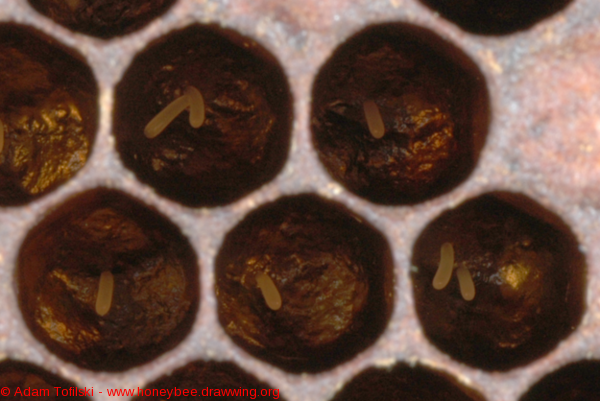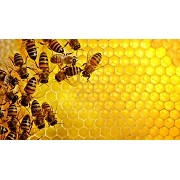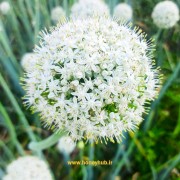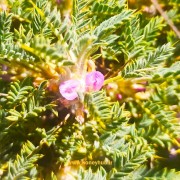An epic narrative of the ancient history and civilization of Persia (Iran); a story of a nation that, like the...
Honeybee Egg Specifications: A Comprehensive Guide to the Life Cycle and Evolution
In the heart of every powerful colony, a small and amazing story is unfolding: the story of a bee's birth from an egg barely visible to the naked eye. This delicate structure is not only the starting point of life but also the genetic roadmap and future of the hive. In this comprehensive and illustrated guide, we journey into the microscopic world of the honeybee egg and discover all the details about its specifications, growth cycle, and secrets.

1. Overview of the Honeybee Life Cycle
The life cycle of all insects, including honeybees, begins with an egg. During the spring season, a queen establishes a new colony by laying an egg in each cell within a comb. Fertilized eggs develop into female worker bees, while unfertilized eggs develop into male drones. For a colony's survival, the queen must continuously lay fertilized eggs to produce new worker bees who are responsible for foraging and caring for the colony.
2. The Queen: Architect of the Colony and the Egg-Laying Process
Each colony has only one queen, who stores enough sperm for her entire life after a mating flight at the beginning of her life. When the queen is no longer able to lay eggs, a new queen replaces her.
The length of a honeybee egg is 1 to 1.5 mm, about half the size of a grain of rice. When laying eggs, the queen moves across the comb, carefully inspecting each cell before placing the egg. This process takes only a few seconds, and a healthy queen can lay up to 2000 eggs in a single day. She starts laying from the center of the frame, creating a circular and orderly pattern so that workers can store food in the outer cells.
Position of the Egg in the Cell
When the queen lays the egg, it is attached to the bottom of the cell by a mucous strand. Initially, the egg is almost perpendicular to the cell floor. Some believe that the egg gradually changes its angle over three days, becoming horizontal [1]. However, other research suggests that this change in position may be due to worker bees pushing the egg with their heads during inspection and is not an inherent movement [3].
3. From Egg to Pupa: Early Stages of Growth
After three days, the eggs enter the larval stage. These larvae, which lack legs, eyes, or wings, resemble small white worms with a mouth. Nurse bees are responsible for their continuous feeding with a mixture of royal jelly, honey, and pollen (bee bread). After a few days, when the larva has grown sufficiently, workers cap the cell with wax, and the larva enters the pupal stage.

4. Complete Growth Timeline (From Egg to Birth)
The duration of growth from egg to a complete bee varies depending on the caste and future role of that bee. The queen has the fastest growth due to her exclusive diet of royal jelly.
| Type | Egg | Larva | Pupa | Full Growth Period (Days) | Start of Fertility |
|---|---|---|---|---|---|
| Queen | Up to day 3 | Up to day 8.5 | Day 8 to emergence | 16 days | Day 23 onwards |
| Worker | Up to day 3 | Up to day 9 | Day 10 to emergence | 21 days | N/A |
| Drone | Up to day 3 | Up to day 9.5 | Day 10 to emergence | 24 days | Around 38 days |
5. Detailed Size and Weight of the Honeybee Egg
The size and weight of eggs can vary between different breeds and even between queens of the same breed, and are influenced by genetics and the queen's age.
- Egg length: Between 1.12 and 1.85 mm.
- Egg width: Between 0.3 and 0.4 mm.
- Egg volume: Between 0.06 and 0.15 cubic mm.
- Egg weight: Between 0.12 and 0.22 mg. Interestingly, the weight of the egg decreases by about 30% during the incubation period due to yolk consumption.
6. Worker Larva Weight Progression Table
The continuous feeding of the larva by nurse bees causes an explosive increase in its weight over a few days. This table shows this amazing growth.
| Day | Growth Status | Weight (mg) | Food Source |
|---|---|---|---|
| 1-3 | Egg | 0.132 (initial) | Yolk |
| 4-5 | Young Larva | Up to 3.4 | Royal Jelly |
| 6 | Larva | 33.3 | Royal Jelly / Bee Bread |
| 7 | Larva | 100.1 | Bee Bread (Honey and Pollen) |
| 8 | Larva | 134.5 | Bee Bread (Honey and Pollen) |
| 9 | Larva (pre-pupa) | 155.2 | Bee Bread (Honey and Pollen) |
7. Special Observations: Two Eggs in One Cell
Normally, the queen lays only one egg in each cell. Observing two or more eggs in a single cell is usually a sign of an abnormal condition in the colony, such as when a young queen is just beginning her work or when worker bees have started laying eggs in the absence of a queen.
























Latest comments